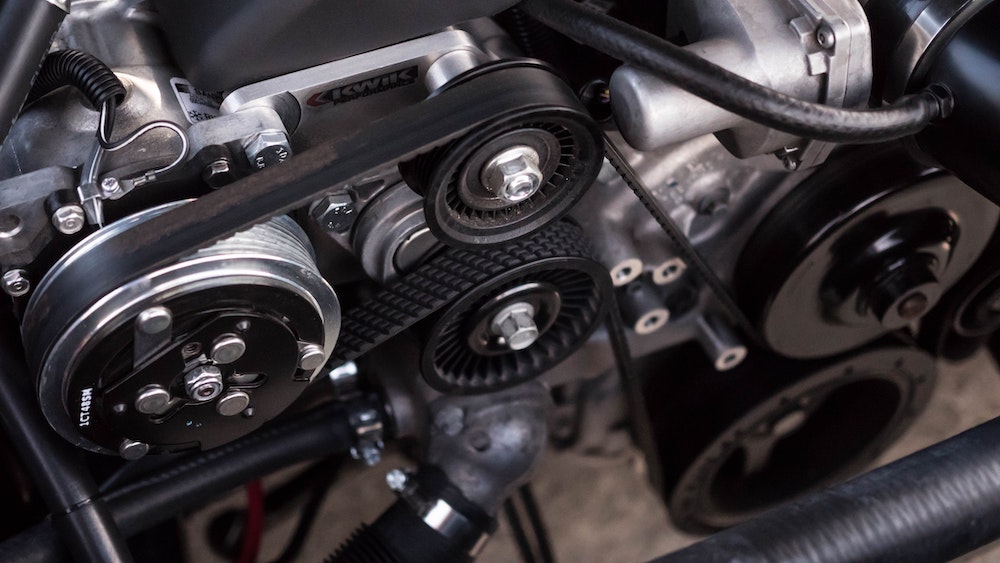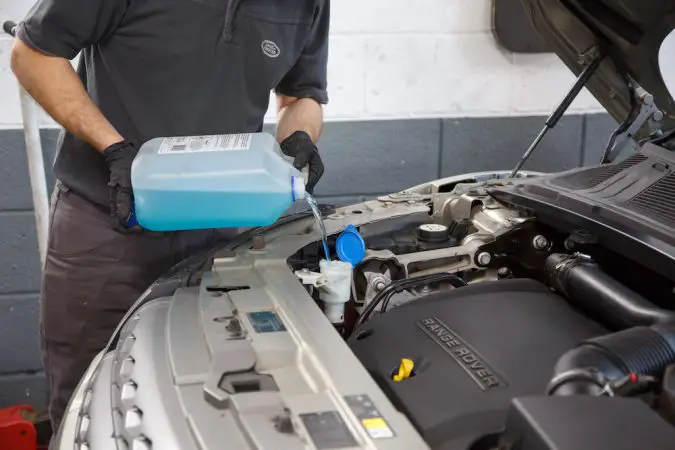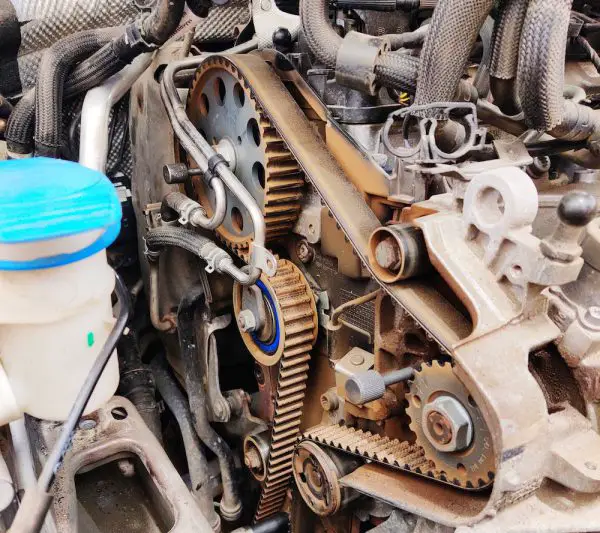Are you having some overheating issues? You are probably thinking that this overheating is caused by the water pump since everything else is in check. And you are probably right. The water pump can fail and cause symptoms like this. That’s why we are here to teach you all of the symptoms of a bad water pump.
The cooling system should be one of your top priorities. Because if there is no cooling, the engine will overheat. Overheating can cause all sorts of issues that could cost thousands in repairs. In most cases, the engine will never be the same.
That’s why you need to address these problems while they are still in their infancy. Similarly with the problem with the water pump. Water pumps are crucial components that have to be in perfect working order 100% of the time. It’s your job that’s to be the case since you are the driver and you can sense when something is off in your car. If you noticed something wrong with your cooling, we are here to elaborate everything for you.
In this article, we are going to cover everything you need to know when it comes to a bad water pump. We will learn first how the cooling system works and what is a coolant. Then we will cover what is a water pump and what are the symptoms of a bad water pump. After this, we will cover the costs to replace a water pump and how you can perform this work at your house. So, without further ado, let’s dive into the article.
How Does The Cooling System Work?
The cooling system is a simple enclosed circulating system. Basically, the coolant is circulating inside and outside of the engine. So, how does this system work in reality?
It’s pretty simple to explain. The system is composed out of piping, a thermostat, a water pump, and a front radiator.
The system should always be full to the recommended level. You can see the level in the coolant expansion tank and should always be above the minimum and below the maximum.
When the car starts, the engine heats up and so does the coolant that is inside of the engine. This helps the engine to reach the operating temperature to work properly.
As soon as the engine reaches the operating temperature, the thermostat opens. When the thermostat opens it releases fresh coolant into the engine (with some pointers on where do I put antifreeze in my car). At this moment the water pump is starting to circulate the coolant inside and outside of the engine.
Pretty simple process, it also does not have a lot of parts that can go bad except the thermostat and the water pump. We are also going to cover all of the symptoms of a bad water pump later in this article. But first, let’s elaborate in-depth on what is coolant and what is a water pump.
What Is Coolant?
The coolant is a special fluid that is used to cool internal combustion engines. The coolant has special characteristics that provide good thermals. Unlike water which is going to boil when it reaches 212 degrees, the coolant does not boil or freeze until it reaches some extreme temperatures.
It also dissipates the heat much better from the engine and the engine works at the ideal temperature when the proper coolant is used.
There are different types of coolants that are used among a wide number of carmakers. We only distinguish them by their color and honestly, we don’t need to know more than that. Since this article is about symptoms of a bad water pump, I will not explain this.
The important thing for you to know is to get the right coolant for your vehicle. If your vehicle has a red coolant, you replace it with a red coolant, if it has a green coolant (or green antifreeze), replace it with a green coolant.
Also, an important thing to note is the proper coolant mixture. The proper coolant mixture should always be 50/50. This means 50% water and 50% coolant in the system.
If the coolant is too strong it will damage the rubber piping, or if it’s too weak it may freeze sooner in winter compared to a proper 50/50 mix. That’s everything you need to know about coolant. Now let’s discuss the water pump before we cover the symptoms of a bad water pump.
What Is A Water Pump?
The water pump is the component in your cooling system that has the duty of circulating the fluid around the system. This means that the water pump is pushing the cold coolant into the engine while it pulls out the hot coolant and is basically circulating the fluid.
The water pump is mechanical and is powered by the accessory belt that is located on the front of your car if your car is a rear-wheel-drive or at the left side in case if the car is a front-wheel-drive.
The crankshaft pulley of the engine is spooling the belt and then the belt is spooling the pump. They basically work together.
Water pumps are rated to last somewhere between 60,000 to 90,000 miles before they fail. But it is often advised to replace them when you replace your accessory belt. This is the case because it’s cheaper to do them both at once than separate since both need to come out and is basically double work.
That’s why you need to replace your water pump every 60,000 miles or less. If you haven’t done that you might like to read the next chapter where we will cover all of the symptoms of a bad water pump.
Symptoms Of A Bad Water Pump
Like with every other component on your car, similarly with the water pump. When it fails it will develop some symptoms. These symptoms usually start to appear when the pump reaches that 60,000-mile mark. But they can also appear sooner than that. That’s why you need to learn the symptoms of a bad water pump.
That’s why in this chapter we will cover everything you need to know when it comes to these symptoms. After reading this it will be quite easier to tell if your water pump has gone bad. And which are the symptoms? Let’s discuss.
Engine Overheating
The first symptom that you will notice is probably the increased engine temperature. If the water pump is broken and doesn’t spin quickly enough or if it’s stuck. The cooling of the engine will be put in danger.
This will result in increased engine temperatures and possible engine damage. The engine will start to lose power since the temperatures inside of the block are far beyond the recommended temperatures from the factory and this is no good.
If your engine overheats the first thing you need to check is the condition of the coolant. But never check the coolant while it’s hot. It is very likely that you will burn yourself. Wait for the engine to cool down. The morning, before you go to work, will be the perfect time to see the level of coolant.
If the coolant level is good, then it is highly likely that you have a problem with your water pump. So, why is this the case? This is the case because the water pump stopped spinning and the coolant isn’t flowing.
But there is another thing that can fail and cause your engine to overheat. And that is the thermostat. The thermostat opens and closes and if it’s stuck closed and doesn’t open it means that the engine will overheat.
There is no way around checking these components without removing them. If you conclude that everything is fine with your cooling system, replacing both these components will be the way to go.
After you replace them, there should be no more overheating issues with your engine. Unless if it’s something else like the blown head gasket that we are going to cover next.
Blown Head Gasket
If your engine has overheated quite a lot and it’s also losing coolant. It is very likely that it also has a blown head gasket. Gasket material does not like extreme temperatures and will degrade if it’s exposed for too long.
In this case, you will have to remove the head and check its condition. If it’s bent then it has to be resurfaced as well. This will cost a lot of money but you have to do it, to make sure that you will not have overheating problems anymore.
This is just a small hint since these two things like overheating and blown head gaskets go hand in hand. When you have one of them you probably have the other one as well. It’s better to be safe than sorry.
Rust Deposits Buildup – Symptoms Of A Bad Water Pump
Another symptom that is very frequent in water pump failures is the rust deposits that are built up in the water pump. These rust deposits are not visible since they are on the inside of the water pump. But still, they are considered to be one of the primary suspects of the failure of the water pump.
Water pumps are not designed to corrode if you are using the recommended coolant but if you are using water instead of coolant they can corrode and go bad.
The rust buildup in extreme cases can also cause leaks from the exterior of the engine. The only way around this problem is to replace the water pump with a new pump. Later in this article, we are going to explain how you can do that after we cover all the symptoms of a bad water pump.
Steam Coming Out
Another symptom of a failing water pump is the steam that is coming out from the gaskets. The gaskets will likely fail with age and if the water pump fails as well there is an immense heat that is created where the water pump is located.
This heat will cause the coolant to vaporize and steam will start to come out from the gasket material. If your water pump has failed and steam is coming out. It is highly likely that it will cause a problem with the engine. The engine doesn’t like heat. Also, it doesn’t like to lose coolant.
The longer this problem exists, the more problems with the engine will arise. The head gasket is the number one target for an overheating engine. It will allow coolant and oil to mix and will create a huge mess inside of your system.
Also, the head will likely bend and it is possible to crack. This will mean a new engine head and a new gasket. That is roughly $1000 if you are lucky. If it goes deeper, it can also crack the block and the whole engine could get scrapped. That’s why if you notice steam, you should act quickly.
Coolant Leaks
Coolant leaks are also present along with the steam issue. The coolant can leak if there is a big enough hole inside of the gasket material.
To notice this symptom, you have to look at the bottom of the engine if there are leaks or on the sides of the water pump.
Check the place where you park your car. If there is green or red stuff under the vehicle it means that there is a coolant leak. This coolant leak can come from the water pump or from the hoses that are going into the radiator.
You need to grab a flashlight and see the undercarriage from where this coolant is sipping. If there is coolant coming from the water pump then you know that it has failed and needs to be replaced with a new unit.
The pump may be good but it is crucial to replace it because if the pump has a lot of miles on it. It is very likely that will fail sooner or later. It’s better to be safe than sorry. If you replace the gasket and the pump fails after few thousand miles, you are going to pay twice for this repair and you want to avoid that since the labor is between $50 to $100 per hour and these repairs will cost you a fortune.
How To Replace A Water Pump?
If you are one of those DIY guys then replacing the water pump should not be a challenge for you. Also, if you want to learn this will be the perfect part of the article. We are going to share with you everything you need to know when it comes to replacing your water pump.
The difficulty of this job depends much on the location of the water pump. This is the case because not a lot of carmakers leave a lot of space for you to work on your car. This means that more components need to come out than you have previously anticipated. In some cars, the whole front end has to come out to get to the water pump. Especially if you own an Audi or a Volkswagen. Their engine bays are extremely tight and getting to the water pump can be a difficult task to do.
For this job, you will need a new water pump kit for your engine and a new thermostat. Since you have opened the water pump, it is also useful to replace the thermostat. I’m saying this because if you don’t replace the thermostat now, it might fail later and you will have to do all this work again. You don’t want that.
Also, make sure that you have some of the symptoms of a bad water pump or the water pump has reached the end of its lifetime and needs replacing. Because you don’t want to replace a perfectly working and new pump. So, with that taken care of, let’s discuss the steps that you have to take to get this work done.
Step 1
The first step is the most important and that is to locate the water pump. The water pump is usually located at the front where the belts are located on rear-wheel-drive cars. Or on the left side of the car for most front-end-drive cars. Also, flush the coolant from the car because, in the end, we will replace this coolant with fresh coolant.
Step 2
This step involves disassembling everything you need to reach the water pump. Every engine is different. Some engines will even not require to remove anything. But in engine bays where the place is tight. It is very likely that you will have to replace the front radiator, condenser, and radiator fan. By removing these components, you will have the perfect working environment to start disassembling the water pump.
Step 3
Now it’s time to release the tension on the serpentine belt. This belt is the one that is powering the water pump and other accessories. To do this, you will have to release the tension and loosen up the belt tensioner. Once you did this work you can start removing the water pump.
Step 4
The water pump is held by a couple of screws. Untighten them one by one and remove them from the pump. Then you have to remove the water pump. If it doesn’t come off on the first try, you can give it a tap, and will come right off.
Step 5
After the old pump is bad, now it’s time to remove the gasket material that is on the housing. Everything has to be perfectly clean if you want to do a good job and your new water pump not to leak. Once you have removed the old gasket, it is time to reassemble.
Step 6
Now it’s time to reassemble the water pump and put it back in its place. For this work, you have a new gasket and gasket maker material. Make sure that you find one that is designed for water pumps if you don’t want your water pump to leak. Apply from this gasket maker on both sides of the gasket and then mount the gasket along with the water pump. Tighten everything up to spec.
Step 7
The final step involves mounting the accessory belt as it was mounted before you removed the water pump and making sure that everything is well connected. Then fill up the coolant and let all the air bubbles escape from the cooling system. Let it run like this for a while and make sure that all the temperatures are good. After that, you are good to go. You saved yourself a lot of money. But how much? Well, we are going to find out in the next chapter.
Cost To Replace A Water Pump – Symptoms Of A Bad Water Pump
So, what is the cost to replace a water pump? The average cost to replace a water pump at a shop is somewhere between $600 to $800. This is the case because the water pump costs a few hundred dollars, as well as the labor, is valued somewhere between $50 to $100 per hour. That’s why it costs a lot of money. A few hours for sure will go into replacing the water pump.
But if you try the DIY guide and your water pump is easily accessible. You can replace the pump and only pay for the water pump alone and that is between $100 to $300. But first, make sure that you learn all of the symptoms of a bad water pump to make sure that the pump is really the problem and then you can start wrenching. Just make sure that you get quality parts. Don’t go for the cheapest ones that you can get. That is the key to a successful job.
Facts about Water Pump Failure in Vehicles:
- The water pump is a crucial part of the vehicle’s cooling system, pumping coolant through the engine to keep it cool.
- The average lifespan of a water pump is 60,000 to 90,000 miles.
- Overheating is a sign of a failing water pump, which can cause serious engine damage.
- Coolant leaks from the water pump are common and a clear sign that it needs to be replaced.
- Corrosion is another cause of water pump failure and can be caused by air seeping through a defective pressure cap, non-compatible or dirty engine coolant, mineral buildup, and age.
- Rust or tiny holes on the exterior of the pump are signs of a corroded or damaged water pump that cannot operate effectively.
- Coolant is usually green, orange, or red, and orange coolant could have rust in it.
- Whining noises from the front of the engine could be a sign of a dying water pump, caused by a loose pulley or worn bearings in the pump’s motor.
- If the engine is running too hot or if you see steam coming out from underneath the hood, do not drive the vehicle.
- It is important to replace a failing water pump to avoid serious engine damage and ensure the proper functioning of the vehicle’s cooling system.
Conclusion – Symptoms Of A Bad Water Pump
In this article, we have covered a lot when it comes to a bad water pump. We learned what is a water pump and how the cooling system works. Then we have learned the proper coolant mixture and then we discussed the symptoms of a bad water pump.
Knowing the symptoms is key in this situation because if you don’t read the symptoms the car will overheat and engine damage will occur eventually.
Then we have learned how to replace a water pump DIY. Doing this job at home will be the perfect DIY task for you. Make sure that you are careful and follow all the steps. That will guarantee that you will not make a mistake.
Lastly, we have covered the costs to replace a water pump. Replacing this pump at a shop will cost a fortune. But doing this work at home will come at a really affordable price point. That’s why you should definitely give it a try.





2 comments
Thanks for the reminder that proper handling of screws if important when getting water pump repairs. I’d like to get mine repaired because I’d like to still use my well through the winter. Luckily, it’s at a place that doesn’t freeze over during those months.
It’s great that you talked about water pumps and how to identify a damaged one. Recently, one of my cousins said he’s working on a special project and needs to know more about pumps. I believe my cousin will definitely benefit from reading your pump tips, so I’ll be sure to share them! Thanks for the advice on how a pump helps move a system’s fluid around.